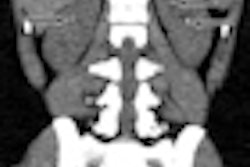Wednesday, November 28 | 3:50 p.m.-4:00 p.m. | SSM20-06 | Room S404AB
Compared with filtered back projection reconstruction images, CT images processed with adaptive iterative dose reduction (AIDR) 3D have less noise, better low-contrast resolution, better diagnostic image quality, and less artifact, reported researchers from Leiden University Medical Center. in effectively reducing radiation dose for patients," said presenter Raoul Joemai. "There is a need for methods to assess accurately the diagnostic performance of these new reconstruction technologies."The study used quantitative techniques to compare image quality for filtered back projection and AIDR 3D, and a subjective evaluation was also performed to support the quantitative findings, according to the research team.
"For evaluation of iterative reconstruction techniques, it is essential to assess noise frequencies in CT images in addition to standard deviation measurements," said Joemai, who received a research grant from Toshiba Medical Systems.
The group acquired images using a Catphan phantom at six tube current levels, and images were evaluated to assess spatial resolution, noise, and low-contrast detectability.
Both objective and subjective evaluations showed superior image quality using AIDR 3D compared to filtered back projection. Low-contrast resolution improved as much as 34% with a substantial reduction in noise compared to FBP, and subjective grading of clinical images confirmed AIDR 3D's improved image quality, artifact reduction, and dose reduction.



















